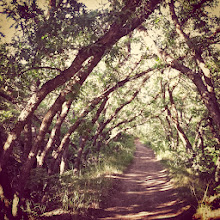
Alright, I'm a dancer at heart. I trained in ballet, tap and jazz since I was 6, and since then I have danced modern, character, hip-hop, African, belly dance and almost any other type you can think of, so I had to post on this marvelous dance film that's been making it's way around Facebook.
Please enjoy Thought of You by the very talented, Ryan Woodward:
Isn't it amazing how just a few lines can capture the essence of dance so well? This is a prime example of how line and the allusion of form can feel more real than the most detailed 3D animation.

This piece is a traditional cell animation, and judging by it's fluidity it was most likely drawn at 24 frames per second (which at three minutes long is about 4,320 drawings!). As an artist, Woodward has a great talent for drawing graceful, graphic lines that appear to be moving even as they are not, which is probably why he gravitates towards animation. The movement is so lifelike in fact, I wonder if it was not rotoscoped?

All the dancing was choreographed specifically for this project, so I'm sure Woodward studied the dancer's movements methodically. Either way, he devised many creative effects to highlight the relationship between the man and woman, such as drawing the woman as a ghostlike figure to emphasize her continued presence in the man's mind, and using imagery of wings to create a feeling of weightlessness which emulates the elation of love and of the love of dance. Just beautiful.

Ryan Woodward studied Art at BYU and earned his Masters Degree from The Academy of Art College in San Francisco. He has worked as a story board/conceptual artist for dozens of Hollywood films, and continues to make his own short animated films.

He has brought the art of dance and animation together in a way I have never seen before, and I never imagined they would complement each other so perfectly. I hope he continues to develop this concept in his future projects.

Another beautiful film Woodward created prior to Thought of You is an interpretation of the ancient Samoan legend, The Turtle and the Shark which you may enjoy here:
It's so beautiful! The textures, dyes, and patterns of the backgrounds are taken from actual "tapa" cloth designs made from the bark of trees native to the Pacific Islands, an art which is almost forgotten today.

The fluid camera pans from scene to scene, coupled with the silhouetted characters, adds an indigenous mystique that transports the mind to an age long past.

Woodward is probably one of the most underrated animators in Hollywood today, creating films that are both elegant and subtle, yet thoughtful and full of substance. Perhaps we'll be privileged enough to see one of his animations as a full-length feature one day.
~S
















































